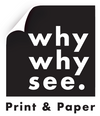What is Riso Printing?
What looks like a photocopier, but inks like a screenprint?
Why a Riso printer, of course!

Riso is the name of a Japanese printer and ink manufacturer, with the prints it produces called risographs. Riso printing has been around since the 1980s, but has only more recently gained a following beyond its traditional customer base of schools, churches, and places where fast, single-colour printing is the norm. Today's riso print community is a vibrant, worldwide crew of creatives pushing the limits on what this printmaking method can do. But what makes riso printing different? Let's find out!
Riso printing is single-colour tonal printing, meaning the file that you send to print is actually in black and white (grayscale). Different shades of colour are made by varying the amount of black or white in an image.
Inks are transparent and layer up much like screen printing. Each spot colour is applied one at a time. If the riso printer has two colour drums, then two colours are applied in one pass, but otherwise, each colour requires a new pass through the riso printer.

Riso inks are made from rice bran and are environmentally biodegradable. The ink really soaks into the paper (hence why only uncoated paper stock works best with this type of printing), and also requires time to dry between print passes because smudging can occur.
Riso printing is FULL of quirks and character. Varying ink coverage, misregistration, tire marks, the list is long of things that can impact the look of your riso prints. It's an imperfect craft with plenty of ‘happy little accidents’ along the way, but it’s just what makes riso so damn charming and fun.

Projects that are great for riso printing include:
| Stationery | Art prints |
| Posters | Zines |
| Biz cards | Newsletters |
| Hang tags | Postcards |
| Flyers | Menus |
| Greeting cards | Business cards |
| Invites | Note cards |


Leave a comment